Laptop Mag Verdict
The Google Pixelbook Go offers a bright display and great battery life, all in a slim design, but the speakers aren't great.
Pros
- +
Superslim design
- +
Bright, colorful display
- +
Great battery life
- +
Solid performance
Cons
- -
Lackluster speakers
- -
Scant ports
- -
Keyboard a bit shallow
Why you can trust Laptop Mag
Google's next Chromebook is here, and if you spend the bulk of your time online and in the cloud, this machine will make a very attractive alternative to Windows laptops.
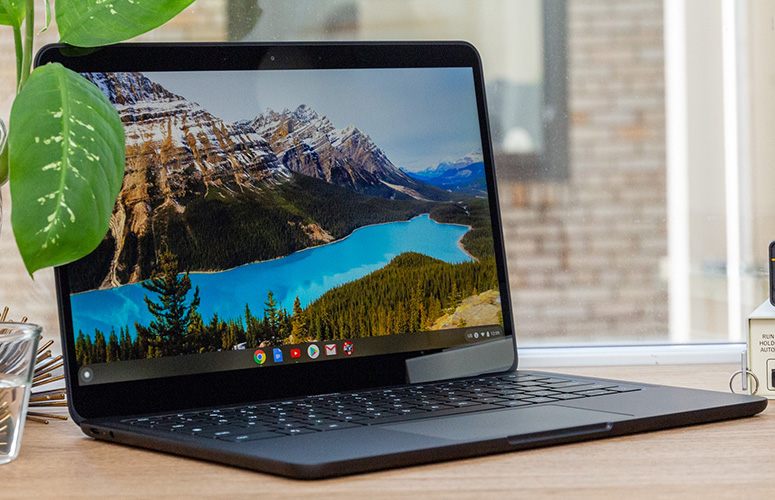
Starting at $649, the Pixelbook Go offers solid performance, a bright 13.3-inch display and awesome battery life, all packed into a superslim chassis. However, the keyboard (while quiet) could use more travel, and the speakers sound on the harsh side.
But overall, the Pixelbook Go is a good enough to land on our best Chromebooks and laptops with battery life pages.
Google Pixelbook Go release date, price and configuration options
The base model starts at $649 and has an 8th Gen Core m3 Y-Series CPU and a 64GB SSD. I tested the $849 version of the Pixelbook Go, which comes with an Intel Core i5-8200Y processor, 8GB of RAM, a 128GB SSD and a 1080p display. A step up from our configuration will run you $999 and bump you up to 16GB of RAM, while the maxed-out, $1,399 model comes with an 8th Gen Core i7 Y-Series CPU, a 256GB SSD and a 4K display.
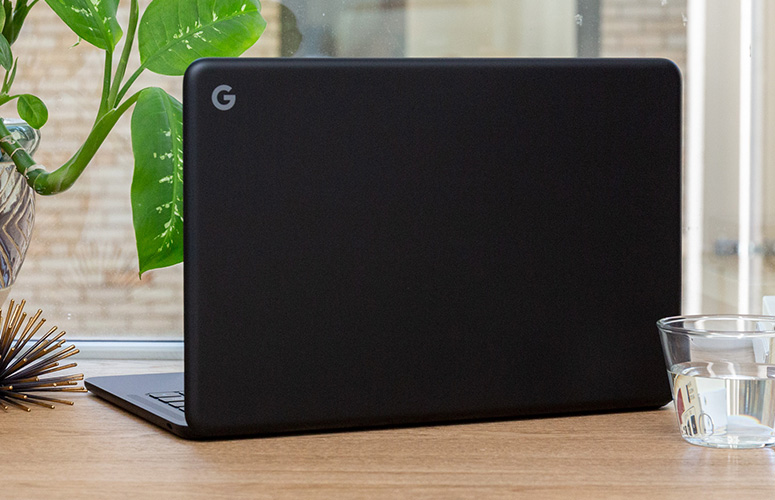
If the Pixelbook Go isn't really what you're looking for, consider looking at our best laptops under $500 page.
Google Pixelbook Go design
We got the Just Black version of the Pixelbook Go, and it is very much just black. The magnesium-alloy lid is black and home to only a sleek G, representing the Google logo. Meanwhile, the underside has Google's new ribbed grippable design. It's comfortable, but it doesn't feel like a necessary design choice.
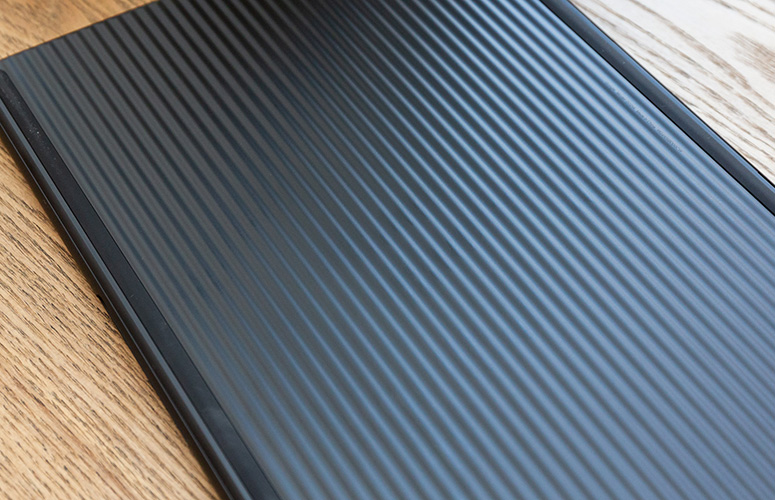
I managed to seamlessly lift the lid of the Pixelbook Go with just one finger without moving the deck, which is neat. The interior of the Pixelbook Go sports a similar plain-black design, but rather than being a bore, the magnesium-alloy texture makes the machine look and feel more premium. The Pixelbook Go's display is paired with narrow side bezels, but the bezels on the top and bottom are a little thicker.
MORE: Should I Buy a Chromebook? Buying Guide and Advice
At 2.3 pounds and 12.2 x 8.1 x 0.5 inches, the Pixelbook Go is lighter and thinner than most of our best 13-inch laptops, so it'll fit in any of our best laptop bags. Google's laptop is more portable than the HP Envy 13 (2.8 pounds, 12.1 x 8.3 x 0.57 inches) as well as its bigger competitors, the HP Chromebook 15 (4 pounds, 14.1 x 9.7 x 0.7 inches) and the Asus Chromebook Flip C434 (3.1 pounds, 12.6 x 8.0 x 0.6 inches).
Google Pixelbook Go ports
There are barely any ports on the Pixelbook Go.
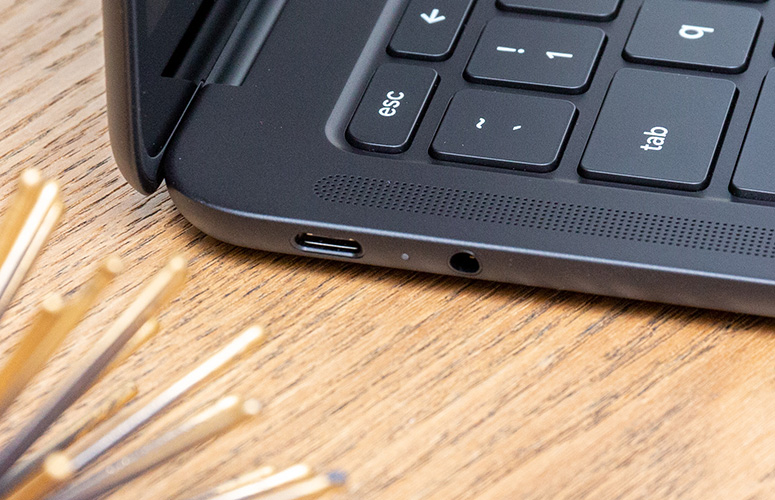
All it has is one USB Type-C port and a headphone jack on the left side, while the right sits lonely with one USB Type-C.
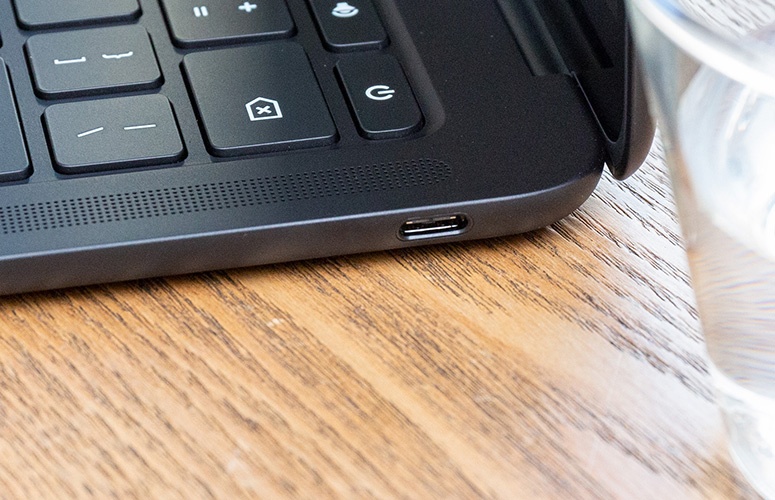
If you're looking to expand your ports, take a stroll down our best USB Type-C hubs or our best docking stations page.
Google Pixelbook Go display
The Pixelbook Go's 13.3-inch, 1920 x 1080, glossy touch-screen display is surprisingly bright and colorful for a Chromebook.
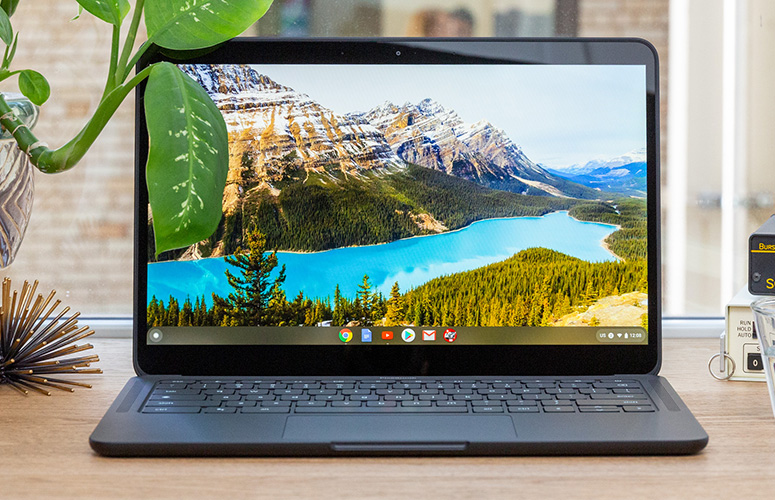
In the trailer for the film 1917, George MacKay jumped off of a balcony, and the sky behind him glowed a dark blue while warm orange fires burned in the distance; it looked bold despite some glare. In the same scene, it was dark on the bottom half of the shot, but I was still able to spot the individual bricks in the wall behind MacKay. In another scene, where MacKay was crouching in a trench, the Pixelbook Go's display revealed the individual stitching on the actor's green jacket.
The Pixelbook Go's 13.3-inch, 1920 x 1080, glossy touch-screen display is surprisingly bright and colorful for a Chromebook.
According to our colorimeter, the Pixelbook Go's screen covered 108% of the sRGB color spectrum, surpassing the 85% Chromebook average. The Pixelbook Go also climbed over the HP Chromebook 15 (64%) and the Chromebook Flip C434 (93%) but was edged out by the Envy 13 (109%).
MORE: Google Pixelbook Go vs Pixelbook: What's Changed?
There was a similar outcome in the brightness gauntlet, with the Pixelbook Go's 368-nit panel far surpassing the category average (265 nits), the HP Chromebook 15's showing (247 nits) and the Chromebook Flip C434's result (286 nits). However, it was once again defeated by the Envy 13's screen, which averaged 410 nits of brightness.
Google Pixelbook Go keyboard, touchpad and touch screen
Google installed its latest Hush Keys in the keyboard of the Pixelbook Go. And while it is successful in being quiet, it sacrifices that pleasant clickiness that a good keyboard should have, as its keys have low travel.
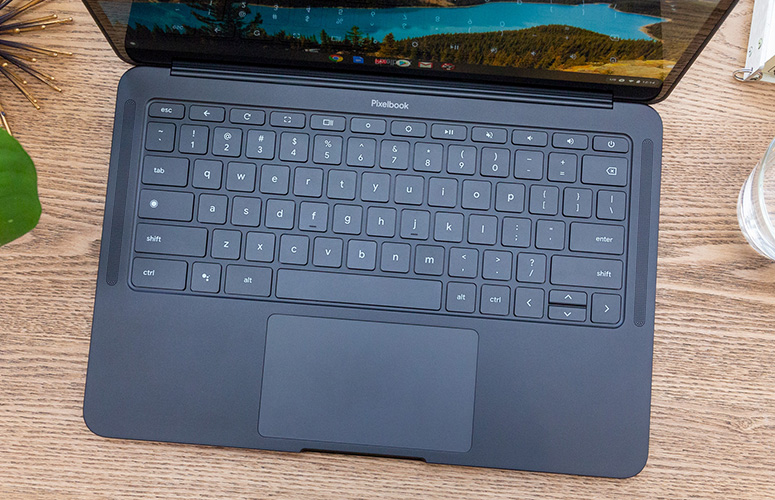
I hit 71 words per minute on the 10fastfingers.com typing test, which is just above my 70-wpm average. Typing on the Pixelbook Go's keyboard wasn't uncomfortable, but it wasn't satisfying either. I bottomed out while typing, and there wasn't much of a click. My colleague Phillip Tracy liked the feel of the keyboard and enjoyed how quiet it was but agreed that it was still too shallow.
There are a couple of custom keys on the keyboard dedicated to Google Assistant and a button to bring up the Google search bar. There's no dedicated keyboard-backlighting button, but you can change the backlighting by hitting the Alt key and then the display-brightness buttons.
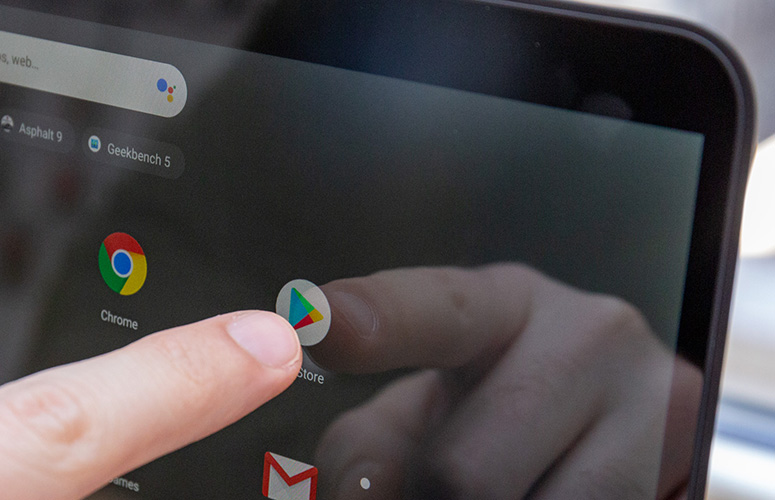
The Pixelbook Go's touch-screen display was kind of sticky when I tested it, as it was difficult for my finger to glide across the screen. However, when my colleagues Phillip Tracy and Sherri L. Smith drew a tree and a flower, they had a smooth drawing experience.
The 4.6 x 2.6-inch touchpad is roomy and soft to the touch, but the cursor is kind of jumpy. It would rapidly accelerate and decelerate when I moved it to click on something. I got the same experience on another Pixelbook Go device. I attempted to lower the cursor speed to see if that would fix it, and this helped, but I still noticed the jumpiness. However, gestures like two-finger scrolling and three-finger tabbing worked fine.
Google Pixelbook Go audio
My ears are not pleased. The Pixelbook Go's top-firing speakers get loud but sound obnoxious at max volume. I listened to Five Finger Death Punch's "Wrong Side of Heaven," and the opening bass drums lacked any proper bass. When the cymbals came in, they were sharp as fingernails going across a chalkboard. On top of all of that, the electric guitar sounded like a mess of noise during the chorus, while the vocals were muddy.
MORE: 15 Google Home Smart Speakers, Ranked from Best to Worst
When I watched a Hot Ones episode from First We Feast, the audio wasn't as unbearable as the heavy rock song had been. However, even the dialogue got uncomfortably sharp occasionally, so I had to turn the volume down to 60%. I wouldn't watch a movie on this machine, though. The speakers did not do the the Ford v Ferrari trailer any justice, as the music and sound effects from the vehicles were too sharp.
Unfortunately, Google does not include any audio software with the Pixelbook Go.
Google Pixelbook Go performance and graphics
Packed with an Intel Core i5-8200Y processor and 8GB of RAM, the Pixelbook Go shredded through 30 Google Chrome tabs and five 1080p YouTube videos simultaneously without any signs of slowdown.
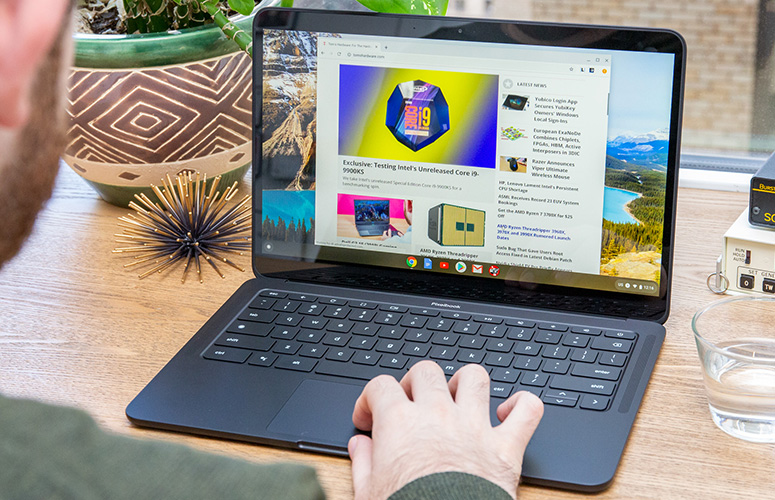
On the Geekbench 4.1 overall-performance test, the Pixelbook Go scored 6,516, surpassing the 6,209 Chromebook average. However, this machine couldn't get past the HP Chromebook 15 and its Core i3-8130U (7,823), the Chromebook Flip C434 and its Core m3-8100Y (6,969), or the Envy 13 and its Core i7-8565U (15,738).
The Pixelbook Go scored 139.8 on the JetStream benchmark, sliding by the category average (110.2) and the Chromebook Flip C434's showing (76.7). Meanwhile, the HP Chromebook 15 blew past the Pixelbook Go, with a score of 163.7.
Google's Intel UHD 615 graphics card was able to reproduce 500 fish on the WebGL Aquarium benchmark at 60 frames per second, matching the HP Chromebook 15 (Intel UHD 620 GPU) and climbing above the Chromebook average (42 fps). When attempting to reproduce 5,000 fish, the Pixelbook Go hit 37 fps, matching the Chromebook Flip C434's Intel UHD 615 GPU.
Chrome OS
Like with any other Chromebook, the Pixelbook Go's Chrome OS is a stripped-down operating system that runs everything through the Chrome browser. If you're primarily using software from Google, then the Chrome OS is a good choice for you.
MORE: Windows 10 vs. macOS vs. Chrome OS: Which Is Best for Students?
However, you're not limited to Google itself, since the company has added the Play Store to the Chrome OS, which gives you access to apps made by other companies. Keep in mind that certain apps in the store won't scale up to your screen well; those include Discord (small text) and Super Mario Run (stuck in portrait mode). And if you're planning on getting the 4K version of the Pixelbook Go, you might have a harder time. However, since the Pixelbook Go has a touch-screen panel, you'll be able to seamlessly interact with Play Store apps.
Google Pixelbook Go battery life
Google's Pixelbook Go is a complete badass when it comes to battery life. The machine surfed the web over Wi-Fi at 150 nits of brightness, and the battery died after 11 hours and 29 minutes, surpassing the 9:31 Chromebook average.
Google's Pixelbook Go is a complete badass when it comes to battery life.
The Pixelbook Go crushed the HP Chromebook 15 (9:51) and the Chromebook Flip C434 (9:58), while just sliding by the HP Envy 13 (11:11). The Pixelbook Go is without a doubt one of our best laptops for battery life.
Google Pixelbook Go webcam
I was surprised with the Pixelbook Go's 1080p webcam. It's definitely one of the better webcams I've tested on a laptop. I could spot sharp details in my hair, and for once, the lights above me didn't blow out the ceiling.
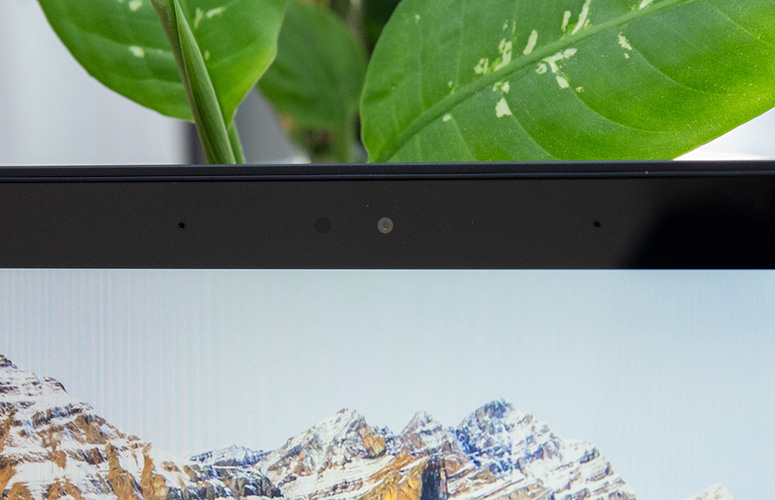
The green and black on my shirt was a little dull, but overall, the webcam is decent.
Google Pixelbook Go heat
This thin-as-heck ultraportable is a cool cowboy when it's under pressure. The Pixelbook Go's underside hit 83 degrees Fahrenheit, falling below our 95-degree comfort threshold. The center of the keyboard and touchpad hit 82 and 77 degrees, respectively.
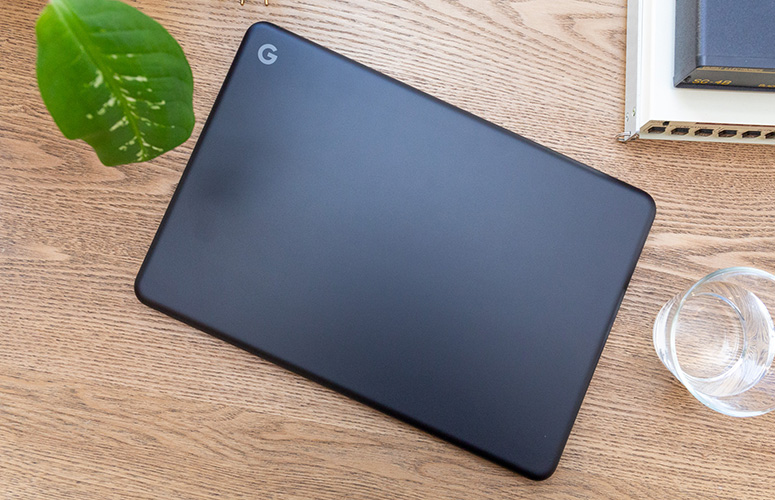
The hottest the laptop got was actually on the deck, exactly where the Pixelbook logo is located above the keyboard.
Google Pixelbook Go warranty and support
The Pixelbook Go comes with a one-year limited warranty.
Bottom line
Google's Pixelbook Go is actually quite good for what it is. It offers a superslim design, a bright display and solid performance, all topped off with great battery life. You will, however, have to deal with the low-travel keyboard and limited number of ports. The biggest strike against this system comes in the harsh-sounding speakers; you'll want to use headphones if you're listening to music.
If you're looking to save a little money, go with the Asus Chromebook Flip C434 (reviewed at $569). It also has a vivid display, long battery life and a sleek convertible design, but all at a cheaper price.
Overall, though, the Pixelbook Go is a solid Chromebook if you're looking for a superthin and light clamshell laptop.
Credit: Laptop Mag
Google Pixelbook Go Specs
| Brand | |
| CPU | Intel Core i5-8200Y processor |
| Display Size | 13.3 |
| Graphics Card | Intel UHD 615 GPU |
| Hard Drive Size | 128GB SSD |
| Hard Drive Type | SSD |
| Highest Available Resolution | 3840 x 2160 |
| Native Resolution | 1920x1080 |
| RAM | 8GB |
| RAM Upgradable to | 16GB |
| Size | 12.2 x 8.1 x 0.5 inches |
| Touchpad Size | 4.6 x 2.6 |
| Weight | 2.33 pounds |

Rami Tabari is the Reviews Editor for Laptop Mag. He reviews every shape and form of a laptop as well as all sorts of cool tech. You can find him sitting at his desk surrounded by a hoarder's dream of laptops, and when he navigates his way out to civilization, you can catch him watching really bad anime or playing some kind of painfully difficult game. He’s the best at every game and he just doesn’t lose. That’s why you’ll occasionally catch his byline attached to the latest Souls-like challenge.
